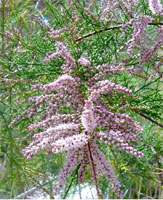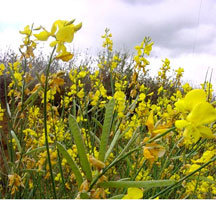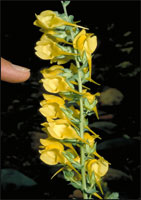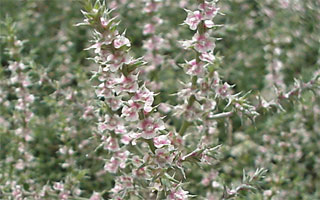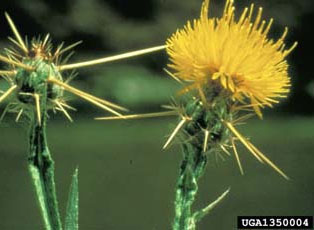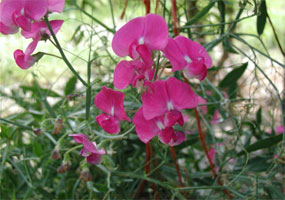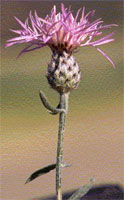See below HTML representation of USFS document on agressive weed life threatening native plant life.
You may click any photo to see a larger view. Note: Some full size photos may differ from thumbnails.
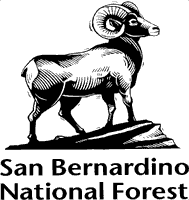 |
|
|
|
Tamarisk or Salt Cedar (Tamarix ramosissima)
Tamarisk uses so much water that it can increase the salt content of the soil, rendering the soil inhospitable to native plant species. It uses more water than comparable native plant communities and dries up springs, wetlands, riparian areas and small streams by lowering surface water tables. |
|
|
Spanish Broom (Spartium junceum)
This species is capable of crowding out desirable native plants and habitats. Spanish broom is considered a potential fire hazard in California, when mature plants form dense, woody undergrowth in hard to reach, hilly areas. All parts of the plant are poisonous if eaten. Mature Spanish broom is extremely difficult to remove. It is primarily spread by vehicles and should be watched for along all roads and trails. |
|
|
Dalmatian Toadflax (Linaria
genistifolia ssp. damatica)
Dalmatian toadflax is an aggressive invader of disturbed areas such as roadsides, fences, rangelands, croplands, clear cuts, and pastures. It can reduce native grass production by 2.5 times. This invasive is extremely difficult to eradicate. |
|
|
Russian Thistle or Tumbleweed (Salsola
tragus)
Russian thistle grows in open disturbed areas. At maturity the adult plant detaches and becomes “tumbleweed.” It has been reported that prairie wildfires can spread rapidly when ignited balls of burning Russian thistle blow through grasslands. Russian thistle is a major problem along the California aqueduct where it can interfere with water delivery and pumping systems. |
|
|
Yellow Star thistle (Centaurea
solstitialis
Yellow Star thistle has invaded the western United States through contaminated feed and seed, and continues to spread across distrurbed areas and along roads and trainl. It crowds out native species and is toxic to horses. The San Bernardino National Forest had successfully eradicated this species, but recently a new patch was discovered. Keep an eye for this one and let’s continue to keep it away! A look-alike weed called Tocolote (Centaurea melitensis), which has shorter ‘spikes’, is common across the front country. |
|
|
Sweet Pea (Lathyrus latifolius)
Sweet Pea is a domestic ornamental escapee and has established along the shore of Big Bear Lake. When it invades an area it out competes native plants which provide habitat for native wildlife species. |
|
|
Spotted Knapweed (Centaurea maculosa)
Spotted Knapweed aggressively invades open lands, roadsides and recreation areas. Get to know this plant and keep your eyes peeled for it! |
| Why does it matter?
Invasive plants are species that aggressively compete with and displace native plant communities. Non-native invasive plants impact ecosystems in every state in the United States. The result can be loss and destruction of forage and habitat for wildlife, loss of available grazing land, diminished land values, lost forest productivity, reduced groundwater levels, soil degradation, increased risk of devastating wildfires, and diminished recreational enjoyment. Although certain plants pecies were introduced in the United States for erosion control or ornamental purposes, many now invade thousands of acres per year. Today, entire ecosystems are experiencing the detrimental impact of invasive and noxious weeds. Invasive species are identified as one of the main threats to National Forest System Lands.
What Can I Do to Help?
- Report to your local Forest Service station the location of any target weeds observed.
- If you pull the weeds, in coordination with the Forest Service, place them in a plastic bag that can be tightly sealed before disposing of it with municipal trash (not green waste or compost).
- In some cases, wash all equipment and vehicles before and after going into infested areas.
- Join your local WMA (Weed Management Area) team.
|
|
You may download a printable version of the above document here.
Share on Facebook



